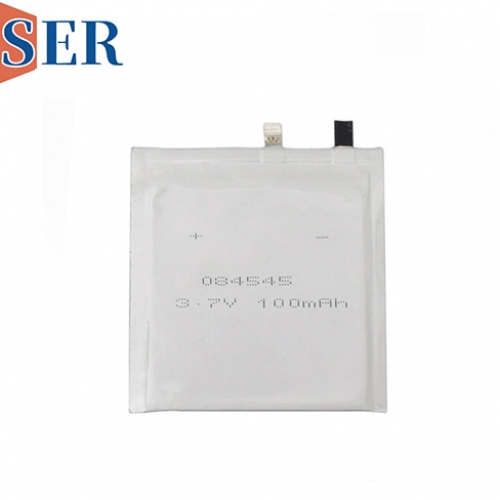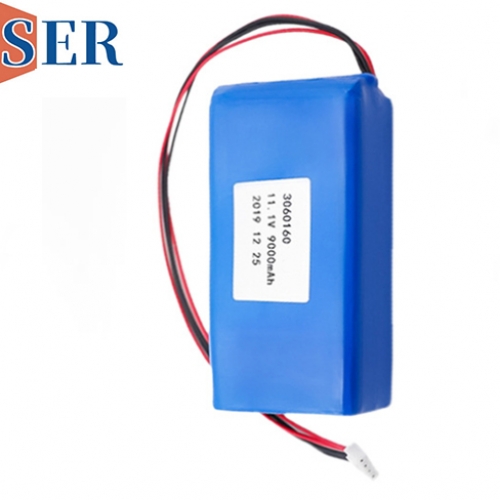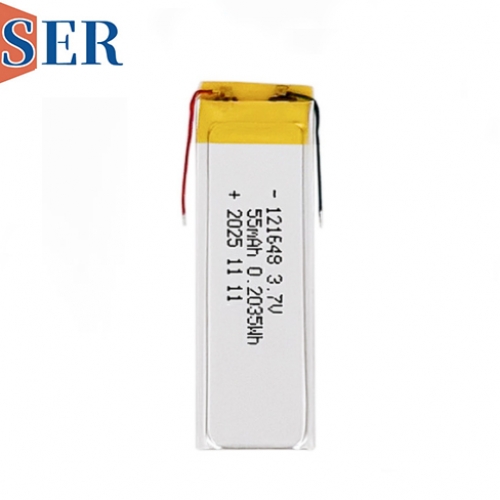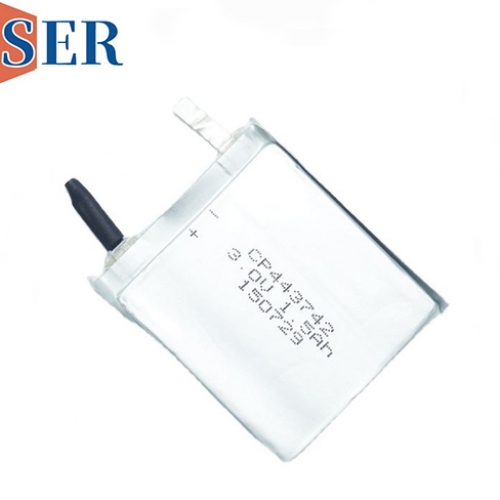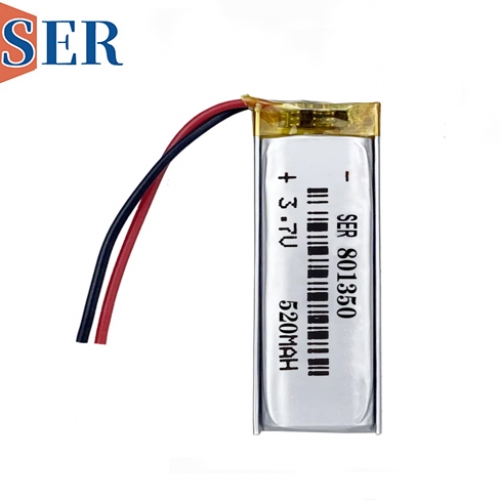3.7V Rechargeable Flexible Ultra - Thin Battery 153045 150mAh: A High Temperature Discharge Lipo Battery Solution
3.7V Rechargeable Flexible Ultra - Thin Battery 153045 150mAh: A High - Temperature Discharge Lipo Battery Solution
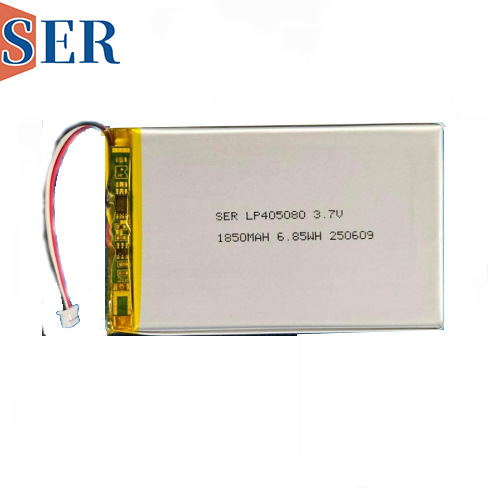
Abstract
This article focuses on the 3.7V rechargeable flexible ultra - thin battery 153045 with a capacity of 150mAh, which is designed for high - temperature discharge applications as a lithium - polymer (Lipo) battery. It begins by introducing the growing demand for flexible and ultra thin battery in various industries. Then, it delves into the technical specifications, features, and advantages of the 153045 150mAh battery, emphasizing its high - temperature discharge capabilities. The article also discusses the manufacturing process, quality control measures, and the importance of choosing an experienced lithium battery provider. Finally, it explores the wide range of applications for this battery and concludes with a look at future trends in the lithium battery market.
1. Introduction
In the era of rapid technological advancement, the demand for compact, lightweight, and flexible power sources has been on the rise across multiple industries. From wearable devices such as smartwatches and fitness trackers to Internet of Things (IoT) sensors and medical implants, there is a growing need for batteries that can fit into small and irregularly shaped spaces while providing reliable power. Among the various types of batteries available, lithium - polymer (Lipo) batteries have emerged as a popular choice due to their high energy density, flexibility in design, and relatively long cycle life.
The 3.7V rechargeable flexible ultra - thin battery 153045 with a capacity of 150mAh is a prime example of a Lipo battery that meets the evolving requirements of modern applications. What sets this battery apart is its ability to perform well under high - temperature discharge conditions, which is crucial for many industrial and outdoor applications where temperature fluctuations are common.
2. Technical Specifications of the 3.7V 153045 150mAh Battery
2.1 Voltage and Capacity
The battery operates at a nominal voltage of 3.7V, which is a standard voltage level for many electronic devices. With a capacity of 150mAh, it can provide sufficient power for low - to medium - power applications. The capacity indicates the amount of charge the battery can store, and in this case, it allows the battery to power devices for an appropriate duration depending on their power consumption.
2.2 Dimensions and Flexibility
The "153045" in the battery model refers to its dimensions in millimeters (15mm x 30mm x 4.5mm). This compact and ultra - thin design makes it highly suitable for applications where space is limited. Moreover, the flexible nature of the battery allows it to be bent and shaped to fit into non - planar surfaces, opening up new possibilities for device design.
2.3 High Temperature battery Discharge Performance
One of the key features of this battery is its excellent high - temperature discharge capability. It can operate effectively in temperatures ranging from [specific lower temperature limit, e.g., - 20°C] to [specific upper temperature limit, e.g., 85°C]. This wide temperature range enables the battery to be used in harsh environments such as automotive applications, where the interior temperature can rise significantly during operation, or in outdoor IoT devices exposed to direct sunlight.
3. Features and Advantages of the Battery
3.1 High Energy Density
Lipo batteries are known for their high energy density, and the 3.7V 153045 150mAh battery is no exception. It can store a relatively large amount of energy in a small and lightweight package, which is essential for portable devices where minimizing weight and size is crucial. This high energy density allows devices to operate for longer periods without the need for frequent battery replacements or recharging.
3.2 Long Cycle Life
The battery is designed to have a long cycle life, which means it can undergo multiple charge - discharge cycles without significant degradation in performance. A typical Lipo battery can withstand hundreds of cycles, and with proper care and usage, the 153045 150mAh battery can provide reliable power over an extended period. This reduces the overall cost of ownership for devices that use this battery and minimizes environmental waste associated with battery disposal.
3.3 Safety Features
Safety is of utmost importance when it comes to lithium batteries. The 3.7V 153045 150mAh battery incorporates several safety features to prevent over - charging, over - discharging, and short - circuits. These features include built - in protection circuits that monitor the battery's voltage and current during operation. In case of any abnormal conditions, the protection circuit will automatically cut off the power supply to prevent damage to the battery and the connected device.
3.4 Fast Charging Capability
In addition to its other advantages, the battery supports fast charging. This is particularly beneficial for users who need to quickly recharge their devices and get back to using them. Fast charging technology allows the battery to be charged to a significant percentage of its capacity in a relatively short time, improving the convenience and usability of devices powered by this battery.
4. Manufacturing Process and Quality Control
4.1 Precision Manufacturing
The production of the 3.7V 153045 150mAh battery involves a highly precise manufacturing process. The electrodes are made from high - quality materials, and the electrolyte is carefully selected to ensure optimal performance. The battery cells are assembled in a cleanroom environment to prevent contamination, which could affect the battery's performance and lifespan. Advanced manufacturing techniques are used to achieve the ultra - thin and flexible design of the battery while maintaining its structural integrity.
4.2 Rigorous Quality Control
Quality control is an integral part of the battery manufacturing process. Each battery undergoes a series of tests during and after production to ensure that it meets the specified performance and safety standards. These tests include voltage and capacity measurements, high - temperature discharge testing, cycle life testing, and safety tests such as over - charge and short - circuit tests. Only batteries that pass all these tests are released for sale, providing customers with reliable and high - quality products.
5. Importance of Choosing an Experienced Lithium Battery Provider
5.1 Technical Expertise
An experienced lithium battery provider has in - depth technical knowledge about battery design, manufacturing, and application. They can offer valuable advice and support to customers in selecting the right battery for their specific needs. For example, they can help customers understand the battery's performance characteristics under different operating conditions and provide guidance on battery management systems to optimize the battery's lifespan.
5.2 Reliable Supply Chain
A well - established battery provider has a reliable supply chain, ensuring a consistent supply of high - quality batteries. They have long - term relationships with raw material suppliers and can source materials at competitive prices, which allows them to offer batteries at reasonable costs. Moreover, a reliable supply chain ensures that customers can receive their orders on time, minimizing production delays and disruptions.
5.3 After - Sales Support
After - sales support is crucial for customers who use lithium batteries. An experienced provider offers comprehensive after - sales support, including technical assistance, warranty services, and battery replacement options. In case of any issues with the battery, customers can rely on the provider to resolve them promptly, ensuring the smooth operation of their devices.
6. Applications of the 3.7V 153045 150mAh Battery
6.1 Wearable Devices
The compact and flexible design of the battery makes it an ideal power source for wearable devices such as smart glasses, smart jewelry, and electronic textiles. These devices require batteries that can conform to the shape of the body and provide long - lasting power without adding significant weight or bulk. The high - temperature discharge capability of the battery also ensures reliable operation in various environmental conditions.
6.2 Internet of Things (IoT) Sensors
IoT sensors are widely used in industrial, agricultural, and smart city applications. Many of these sensors are deployed in outdoor or harsh environments where temperature variations are common. The 3.7V 153045 150mAh battery can provide a stable power supply to these sensors, enabling them to collect and transmit data continuously. Its long cycle life also reduces the need for frequent battery replacements, making it a cost - effective solution for large - scale IoT deployments.
6.3 Medical Implants
In the medical field, the battery can be used in certain types of medical implants, such as implantable sensors or drug delivery devices. The flexible and ultra - thin design allows the battery to be integrated into the implant without causing discomfort to the patient. The high - temperature discharge performance is also important as the body's internal temperature can vary, and the battery needs to operate reliably under these conditions.
7. Future Trends in the Lithium Battery Market
7.1 Increased Energy Density
As technology continues to advance, there is a constant demand for lithium batteries with higher energy density. Researchers are exploring new materials and electrode designs to increase the amount of energy that can be stored in a given volume or weight of the battery. This will enable the development of even more compact and powerful devices in the future.
7.2 Improved Safety
Safety will remain a top priority in the lithium battery market. Manufacturers will continue to invest in research and development to improve the safety features of batteries, such as developing more advanced protection circuits and fire - resistant materials. This will help to prevent battery - related accidents and increase consumer confidence in lithium battery - powered devices.
7.3 Sustainability
With growing environmental concerns, there is a trend towards more sustainable lithium battery production and recycling. Manufacturers are looking for ways to reduce the environmental impact of battery manufacturing by using renewable energy sources and recyclable materials. Additionally, there is an increasing focus on developing efficient battery recycling processes to recover valuable materials and reduce waste.
8. Conclusion
The 3.7V rechargeable flexible ultra - thin battery 153045 150mAh is a high - performance Lipo battery that offers several advantages, including high energy density, long cycle life, safety features, and high - temperature discharge capability. Its compact and flexible design makes it suitable for a wide range of applications, from wearable devices to IoT sensors and medical implants. Choosing an experienced lithium battery provider is essential to ensure the quality, reliability, and after - sales support of the battery. As the lithium battery market continues to evolve, we can expect to see further advancements in energy density, safety, and sustainability, opening up new possibilities for battery - powered devices in the future.

